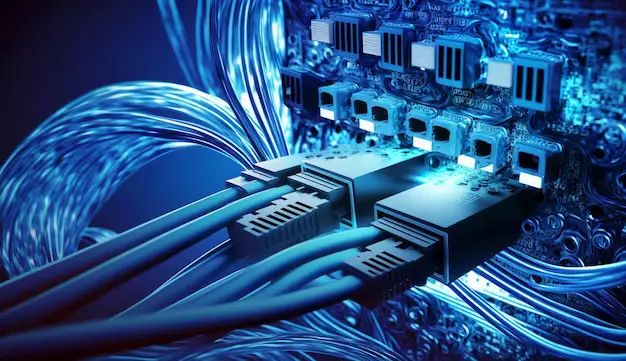
Local Area Network (LAN) Explained
Local Area Networks (LANs) are the backbone of modern connectivity, enabling fast and secure communication within homes, offices, and educational institutions. In this comprehensive guide, we'll explore what LANs are, how they work, their key components, and why they remain a popular choice for building high-speed networks.
What Is a Local Area Network (LAN)?
A Local Area Network (LAN) is a network that connects computers and other devices within a limited geographic area—such as a home, school, or office building. LANs allow for the sharing of resources like files, printers, and internet connections, ensuring seamless communication and data transfer among connected devices.
Key Features of LANs:
- High-Speed Connectivity: LANs typically provide fast data transfer rates.
- Limited Geographic Area: LANs cover a small area, making them ideal for localized networking.
- Resource Sharing: They enable multiple devices to share common resources, reducing costs and improving efficiency.
How Do LANs Work?
LANs operate by linking devices through wired (Ethernet) or wireless (Wi-Fi) connections. Network components such as switches, routers, and access points facilitate the data flow, ensuring that information reaches its intended destination quickly and securely.
Network Topologies
LANs can be structured in various topologies, including:
- Star Topology: Each device connects to a central hub or switch.
- Bus Topology: All devices share a single communication line.
- Ring Topology: Devices are connected in a circular format, where each device has exactly two neighbors.
These topologies determine how data is transmitted and how easily the network can be expanded or maintained.
Key Components of a LAN
Building a reliable LAN involves several critical components:
- Routers: Direct traffic between different networks and provide access to external networks like the internet.
- Switches: Connect devices within the LAN and manage data traffic to ensure efficient communication.
- Cables and Connectors: Ethernet cables are commonly used for wired LANs, ensuring high-speed and stable connections.
- Wireless Access Points (WAPs): Enable devices to connect to the network without cables, crucial for modern wireless LANs (WLANs).
Advantages of Using LANs
Implementing a LAN offers numerous benefits:
- Speed and Efficiency: LANs provide high-speed connections ideal for data-intensive applications.
- Cost-Effective Networking: Sharing resources such as printers and storage devices reduces overall costs.
- Enhanced Security: LANs can be easily managed with dedicated security protocols to protect sensitive information.
- Scalability: As your business or network needs grow, LANs can be expanded with minimal disruption.
Setting Up a LAN
Creating a LAN involves a few essential steps:
- Plan Your Network: Determine your network's purpose, the number of devices, and required speed.
- Select the Right Equipment: Choose routers, switches, and cables that match your network's requirements.
- Install and Configure Hardware: Set up the physical network and configure network settings.
- Test Connectivity: Ensure all devices can communicate effectively and troubleshoot any issues.
Following these steps will help you establish a robust and reliable LAN.
The Future of LANs
As technology evolves, LANs continue to adapt to new challenges and opportunities. With advancements in wireless technologies, Internet of Things (IoT) integration, and enhanced security protocols, LANs remain a critical component of modern network infrastructure.
Conclusion
Local Area Networks (LANs) are essential for creating high-speed, secure, and efficient networks in various environments. By understanding how LANs work, the key components involved, and the steps to set up a reliable network, you can build a system that meets your connectivity needs both today and in the future.